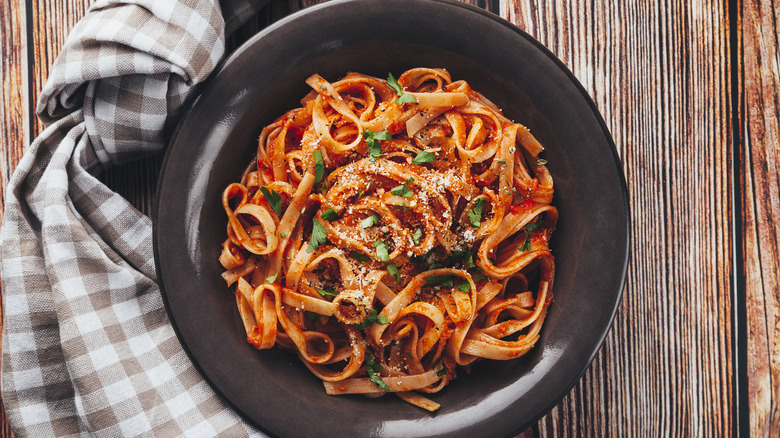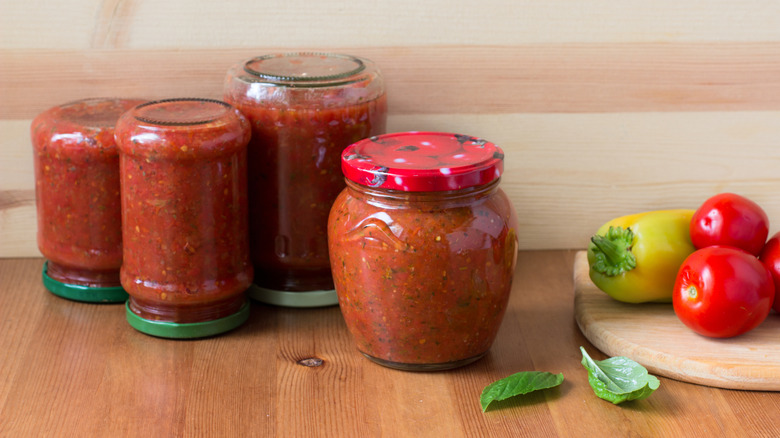The Key Differences Between Bolognese Sauce And Marinara Sauce
Pasta options at any authentic Italian restaurant can be daunting. Choosing between white, rose, or red sauce, and knowing which type of pasta goes best with what type of sauce can leave the uninitiated meekly opting for a portion of good old lasagna instead. To get started with Italian eating 101, one must know the difference between bolognese and marinara sauce. They are both ubiquitous in Italian cuisine and both tomato based. So what exactly makes them different? Put simply, bolognese has meat in it and marinara does not.
Bolognese sauce usually is made with a mixture of beef and pork, and has been simmered for hours so that the juices from the meat can really give the sauce a rich, textured flavor. In addition to the meat, bolognese sauce often has other ingredients, such as wine, cream, onions, carrots, and celery. Marinara sauce, on the other hand, is traditionally made with just a few ingredients: tomatoes, garlic, herbs, and sometimes onion. The most basic marinara sauce is made with tomatoes, garlic, and basil. This simple sauce may seem dull next to bolognese's complex flavor profile, but its versatility makes it one of Italy's most beloved sauces.
Why everybody should have a stash of marinara sauce
If you have ever been lucky enough to participate in a traditional Passata Day, you know just how serious Italians are about having a stockpile of tomato sauce. Otherwise known as Tomato Sauce Day, it's when families gather together after the tomato harvest and make massive batches of tomato puree to use during the winter months. Many people add herbs and garlic to each bottle of sauce, having a readymade marinara for those winter evenings when you just don't feel like cooking something elaborate. These bottles of tomato sauce can also be helpful when you need to make bolognese and don't have hours to simmer the spices and meat. An extra bottle of marinara sauce in the kitchen can be used to make a simplified bolognese sauce. Though it won't have the complex flavors and thicker consistency of a traditional bolognese, it can work in a pinch by adding meat and vegetables.
Not everyone is fortunate enough to have Italian friends gifting them jars of marinara sauce to get them though the winter, so sometimes store bought will have to do. It's always a good idea to have a bottle of multipurpose marinara sauce in the cupboard. Though it can never be as good as the homemade variety, some brands definitely come closer to replicating the authentic flavors than others. Marinara sauce can be used as a base for soups and stews, for pizza sauce, in lasagna, and as a starter for more elaborate pasta sauces. You can get as creative as you want, but sometimes, nothing hits the spot quite like a simple plate of spaghetti with marinara sauce.

